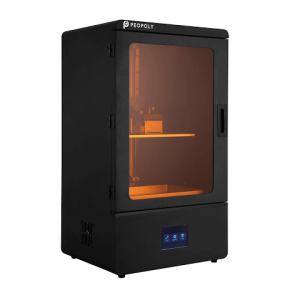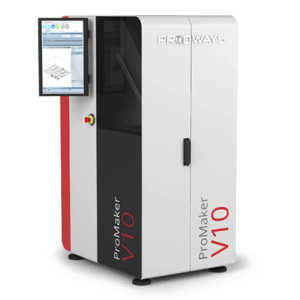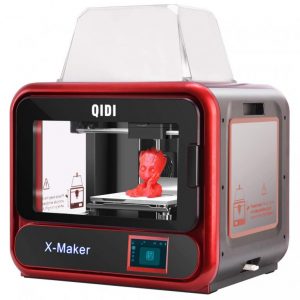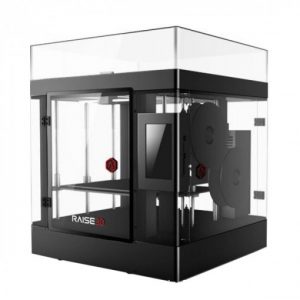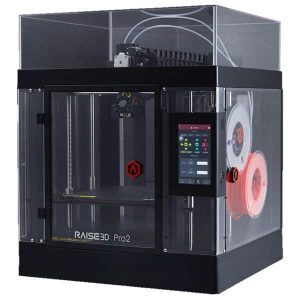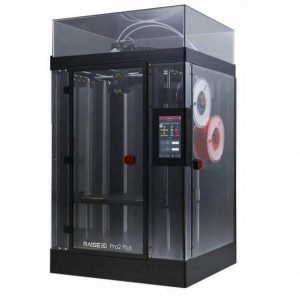Worldwide
Filter
Showing 151–180 of 260 results
PROS:
- Compact and sturdy design
- Precise printing
- Deposits two different materials for top-notch results
- Precise PPCB printing
CONS:
- Costly and not affordable for small business owners
PROS:
- Fast printing with dimensional accuracy.
- A considerable amount of build volume.
- Stable printing.
CONS:
- The printer has an enclosed design due to which the post-processing of parts is an issue.
PROS:
- Amazing print quality
- Comparatively low cost for an SLA 3D printer
- Can work with almost any liquid resin;
- Provide more control over printer’s settings
CONS:
- Not a click to operate the system. Needs a lot of manual intervention
- The print tray needs to be replaced after every 4 liters of resin usage
PROS:
- The printer has a massive build volume
- It has easy bed leveling
- Phenom has a responsive user interface
CONS:
- There are adhesion problems in the printer.
- Loud noise-producing fans.
- Fill indicator missing in the printer.
PROS:
- High-resolution liquid crystal display.
- Solid and strong unit.
- High-quality electronics.
- Customer-centric design.
CONS:
- The build space is small. Hence, it may cause concern in the event you want to build the larger parts in one go.
PROS:
- Phrozen Shuffle XL has a huge build area and faster print times.
- The print quality of this printer is superb and it can also be connected via the Internet.
- Its utility is as consistent as its looks are and the fact that it offers high-quality print is just above both of those qualities.
- Despite these amazing features, the printer is affordable compared to similar systems.
CONS:
- For operating the printer in the long term you need some extra accessories.
- The printer has two Loud and Frustrating fans.
- The user interface of this printer is bloated.
PROS:
- Extremely affordable.
- Easy to use.
- Faster than its competitors.
CONS:
- Offers a smaller build volume.
- USB input is not that good.
PROS:
- Produces high quality prints in commendable print time.
- Has a simple and easy to use user interface.
- A built-in camera to monitor complete 3D printing process.
CONS:
- Software of the printer is not very flexible.
PROS:
- It creates very precise parts
- Can work with viscous liquids for printing composite models
- Company offers prompt support and technical training
- Advanced features
- Granite build platform
- Inbuilt real time slicer
CONS:
- Bulky
- Expensive
PROS:
- Wide choice of materials for 3D printing.
- High-quality printing of parts or functional prototypes.
- Great surface finish.
CONS:
- Post-processing of parts and functional prototypes is difficult.
PROS:
- The printer is from the open-source
- Easy to set up and assemble
- It has a large online community of supporters and users
- Amazing print quality
- Automatic bed leveling
- Heated print bed
- Compatibility with third-party filament system
- Multiple material support
- Affordable
CONS:
- Open frame
- Non-removal print bed
Best price
PROS:
- Reliable and stiffer frame built
- Printer is capable of detecting crash
- Removable magnetic print bed
- Power recovery backup
- 9 Points Autocalibration
- Higher Cooling and temperature management
- Less Noisy
CONS:
- Poor bed adhesion
- Decent quality of prints
- Assembling requirement (One can choose to pay for assembled printer)
PROS:
- Prusa SL1 is not only a printer but a complete ecosystem.
- The assembled printer requires minimal setup.
- Prusa SL1 comes with a comprehensive build guide.
- The printer is compatible with third-party resin as well.
CONS:
- Prusa SL1 has a relatively small print bed, for this price.
- The slicer’s estimated time for the print process is inaccurate.
- The supports of the printer sometimes lose adhesion.
- The bed raising of the printer is not possible at the mid-print.
PROS:
- The enclosed area provides noise-free printing.
- Comes with clear instructions and guides.
- Bed leveling is automatic.
- The build plate is magnetic.
- Can be connected using Wi-fi and has a built-in camera on board.
CONS:
- Build volume is smaller compared to others in the same price range.
- Replacements are hard to find.
PROS:
- Swappable extruder
- Multi-Material Support
- Large print volume
- High speed
- Great accuracy and precision
- Sturdier frame
- Heated print bed
- Assisted bed leveling
CONS:
- Large footprint
- No dual extruder
- No automated bed leveling
PROS:
- It has outstanding customer service
- This 3D printer has a well-built metal frame
- X-One 2 comes fully assembled so it’s easy to setup
- The print quality of parts and functional prototypes are excellent
- The printer has a touchscreen interface
- It has a print bed that is easy to level
- Has an eccentric pause and resume function
- Qidi Tech X-One 2 is compatible with third-party slicers
CONS:
- The printer has a limited build size
- The stock build plate of the printer has adhesion issues
- Documentation of the printer is very confusing in some areas
- The filament of Qidi Tech X-One 2 is very tricky to load
PROS:
- The 3D printer can work with multiple filaments
- The build volume is more than sufficient for most of the applications
- It creates precise and accurate 3D models
- Easy to set up and beginners friendly
CONS:
- Poorly Translated Documentation and Customer Service
- The touch screen may also respond slowly in some cases
PROS:
- Easy to assemble and setup
- Dual extruder
- Removable print bed
- Above-average print
- Responsive technical support team
- Reliable ecosystem
- Supports PLA, ABS, and PETG
- Affordable
CONS:
- Manual Bed Leveling
- The proprietary slicer isn’t very advanced
PROS:
- The printer is affordable and very Cost-effective
- It features a print recovery function, saving the print from unnotified power outages.
- Fully assembled and plug and play design.
- Users can print using third-party materials
CONS:
- Limited build volume
- Manual leveling may seem challenging for a complete beginner
PROS:
- Excellent print quality
- Large build volume
- Exceptional build quality
- Offers precision and accuracy
- Versatile with many options and upgrades
- Safe and great for beginners
- Backup battery
- Enclosed for safety
- Touchscreen and Wi-Fi enabled
CONS:
- Pricey
- Software compatibility
- Large size
PROS:
- Reliable
- Amazing print quality
- Larger print volume
- Affordable professional 3D printer
- Heated print bed
- Closed frame
- Multi material support
- Power outage resume
CONS:
- Not affordable for home users
- Software lacking controls for setting extruder’s fan speed
- Single extruder
- Manual bed leveling
PROS:
- Dual extruder
- Multiple material support
- Very high precision
- Enclosed build chamber
- Pre-calibrated 3D printer
- Removable print bed
- Reliable
- Sturdy
CONS:
- Few settings are difficult to locate in ideaMaker software
- Difficult user interface
- Not affordable for home users
PROS:
- Dual extruder
- Enhanced drive motor setup
- Heated and removable bed
- Large print space
- Power outage recovery
- Filament run-out sensor
- Best for professional application
- Reliable
- Responsive support
CONS:
- Expensive
- Slicing software is tricky to understand
- Not fit for home use
- Very large in size, occupying considerate space
PROS:
- Speedy printing of objects varying in different build volumes.
- Capable of printing highly accurate geometries with superb layer resolution.
- Offers powerful solutions to dental demands in the industry.
- Fits Lab and clinical conditions optimally.
- Provides a huge build volume.
- Powerful software solution with an amazing set of features.
- Robust mechanics and sparkling looks.
CONS:
- Like every other DLP 3D printer, RayDent too is on the higher end of the budget compared to printers based on different 3D printing technologies
PROS:
- Integrated process software control.
- Controlled powder management.
- High precision dynamic optical control.
- Intelligent gas flow system.
CONS:
- Operating RenAM 500Q demands a lot of expertise related to Direct metal Laser sintering 3D printing technology.
PROS:
- Amazing print quality
- Compatible with multiple materials
- Remote monitoring
- Enclosed frame
- Automatic calibration
- Easy to print;5 inches color touch screen
CONS:
- A bit noisy
- No dual extruder
PROS:
- Capability to print with various materials.
- Capability to print large parts and functional prototypes.
- Application of printed parts in various industries.
- Able to withstand high temperatures.
CONS:
- Wearing out of the nozzle.
- Extruder clogging up.
- Expensive filaments.
PROS:
- Enclosed chamber
- Larger build space
- Beltless system
- Heated print bed
- Advanced air cooling system
- Enhanced Z component
- Faster Speed
- Support for multiple filaments including industrial grade materials
CONS:
- It is very expensive
- Not suitable for home use
Best price
PROS:
- Large Build Volume.
- Fast Heating.
- Negligible clogging and warping.
- Resume Print function.
- Top-quality control features.
- Compatibility with Multiple filaments.
CONS:
- Open body 3D printing causes uneven heating, which if not monitored, leads to a rough surface finish in the printed parts.




